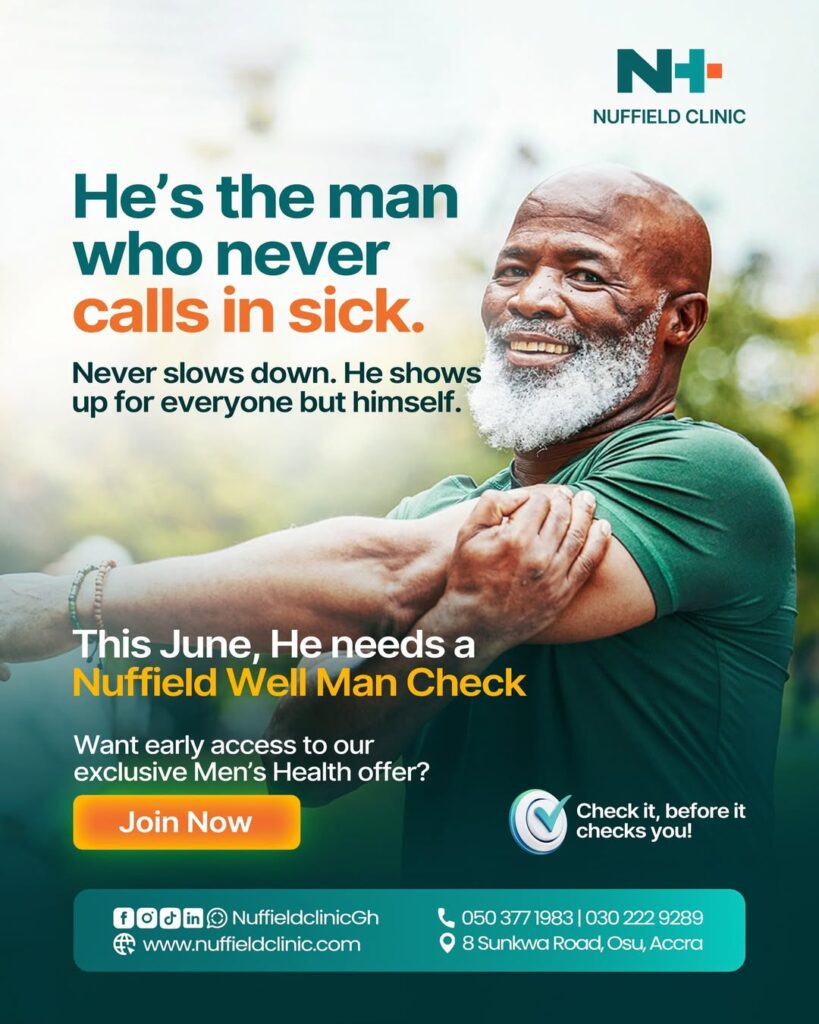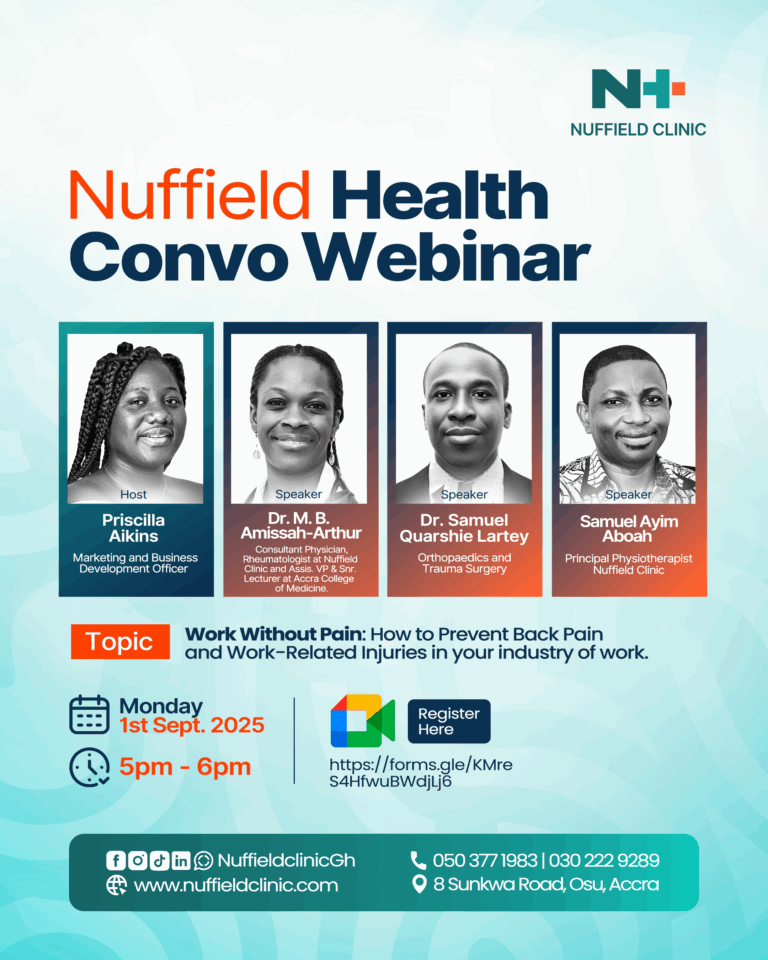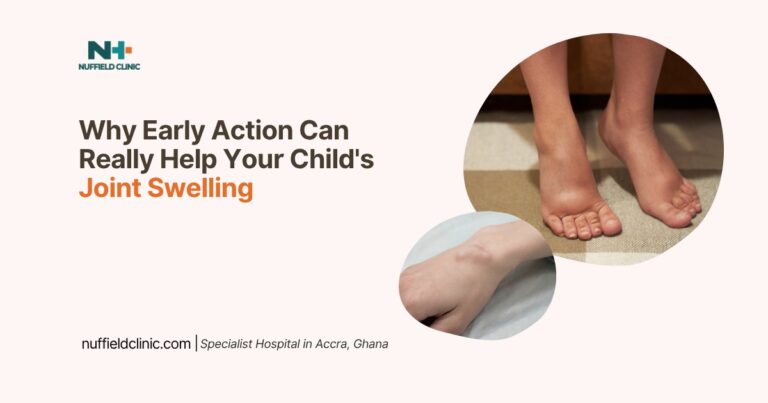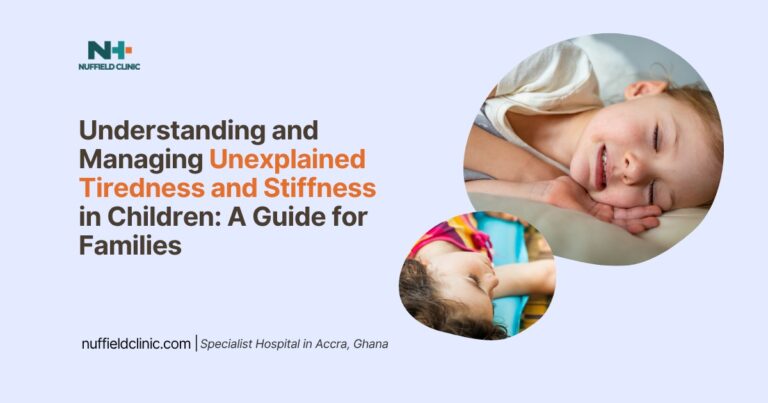What is Bursitis and How can you Reduce the Pain and Swelling?
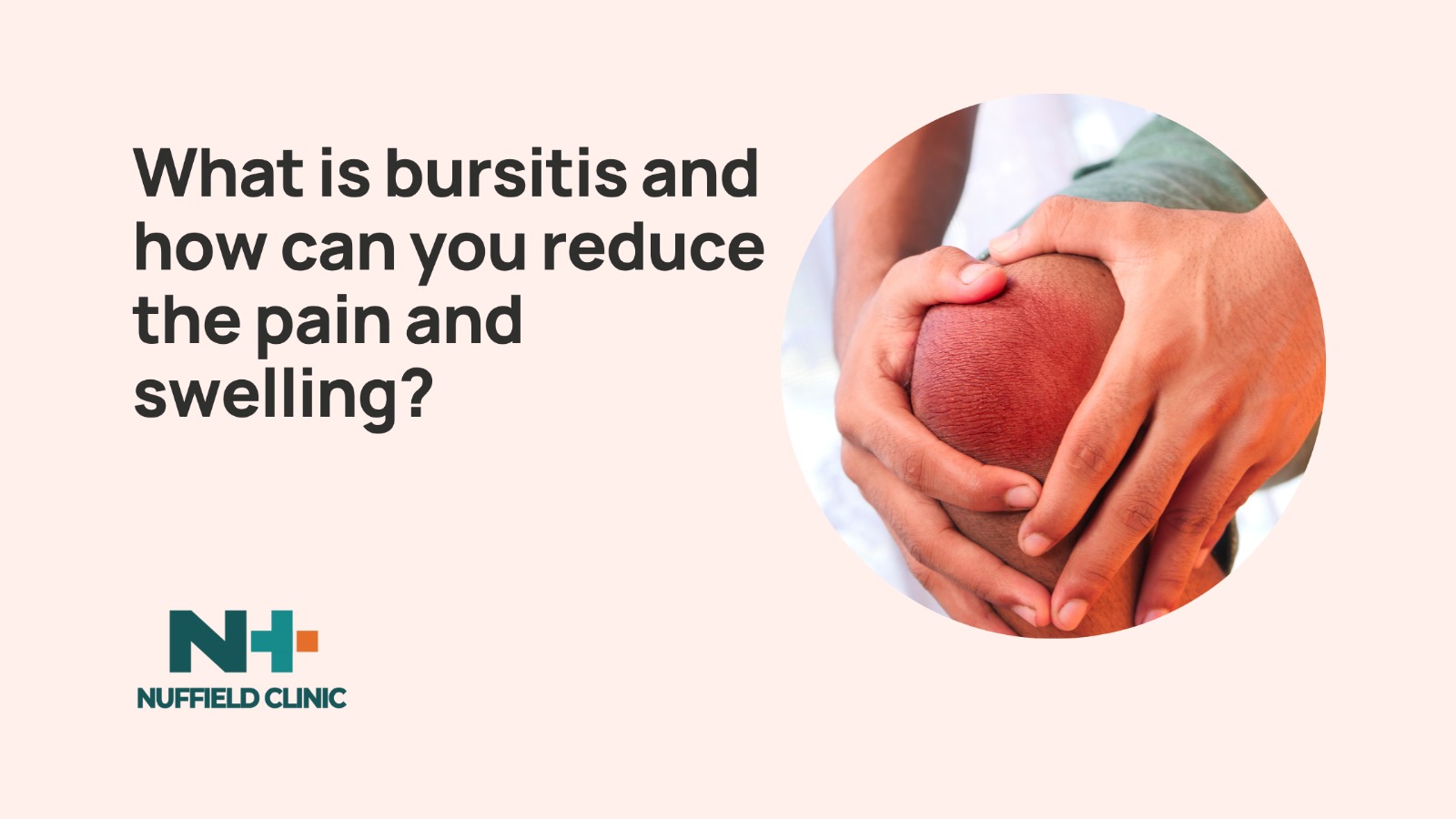
Do you struggle with pain, swelling, or stiffness around your shoulder, hip, elbow, or knee? Does the discomfort worsen when you move, kneel, or lift something heavy? If yes, then this article is for you.
This guide is tailored to everyday people, especially active workers, older adults, or anyone who performs repetitive tasks, who might be dealing with unexplained joint discomfort. You don’t need a medical background to follow along. At Nuffield Clinic, we believe that knowledge is the first step to healing. That’s why we’ve put together this friendly, clear, and expert-backed breakdown of bursitis: what it is, what causes it, what you can do about it, and how our physical therapists can help you feel better, fast.
What exactly is bursitis?
Your body has over 150 tiny, fluid-filled sacs called bursae (one is called a bursa). These little cushions sit between your bones, muscles, and tendons, especially near joints. They help everything glide smoothly when you move, like tiny shock absorbers for your joints.
But sometimes, these bursae become inflamed. They swell up with fluid. They get irritated. And when that happens, moving becomes painful. That condition is called bursitis.
It’s common. It’s uncomfortable. And if not treated or managed well, it can come back again and again.
What causes bursitis?
There’s no one-size-fits-all answer here. Often, it’s a mix of reasons. Maybe you overused a joint, like pitching a baseball or trimming bushes. Maybe you knelt on a hard surface for too long. Maybe you had a fall or other injury.
Infections can also cause bursitis, especially if bacteria like Staphylococcus aureus find their way into the bursa. Other times, bursitis is a side effect of health issues like arthritis, gout, diabetes, or thyroid disease.
Even your posture, body mechanics, or muscle strength matters. Poor form during movement, differences in leg length, or weak core muscles can all put too much pressure on the joints and their bursae.
Where does it hurt?
While bursitis can affect many joints, it usually shows up in some key areas:
- The shoulder, elbow, and hip are the most common.
- It can also strike your knee, heel, or the base of your big toe.
- There are even specific names for certain types, like trochanteric bursitis (hip), olecranon bursitis (elbow), and prepatellar bursitis (knee).
What does bursitis feel like?
Most people feel pain, swelling, or stiffness in the joint. Movement becomes difficult. Sometimes, the area turns red and feels warm to the touch, especially if the inflamed bursa is close to the skin.
If bursitis is caused by an infection, you might also get a fever.
And in chronic cases, even when pain fades, you could still lose some range of motion.
Are you at risk?
You might be more likely to get bursitis if:
- You’re over 40
- You work manually, like in construction, farming, or cleaning
- You do sports with repetitive motions
- You sit or kneel for long periods
- You have conditions like obesity, rheumatoid arthritis, gout, diabetes, or HIV
How is bursitis diagnosed?
Usually, it starts with a conversation. Your healthcare provider will ask about your pain, what activities you do, and your general health. Then, they’ll do a physical exam, checking for swelling, tenderness, warmth, or restricted movement.
Sometimes, tests are needed:
- Blood tests to check for infection
- Fluid analysis if the doctor wants to draw out a sample from the bursa
- Imaging tests like X-rays, MRIs, or ultrasounds to rule out other issues
How do you treat bursitis and relieve the pain?
The good news? Most cases improve within one or two weeks with the right care. And many don’t need invasive treatment.
Start with RICE therapy: Rest, Ice, Compression, and Elevation. This simple at-home routine helps reduce swelling and soothe discomfort.
You can also take NSAIDs like ibuprofen or naproxen to ease inflammation. If pain is near the surface, creams, gels, or patches may help. If it’s caused by bacteria, antibiotics are essential.
When bursitis is persistent, Nuffield Clinic offers professional solutions that go beyond home care:
- Physical therapy: Our customised rehab programs strengthen muscles, improve joint function, and prevent flare-ups. It’s noninvasive and highly effective.
- Corticosteroid injections: These provide fast relief, especially for deep or stubborn cases.
- PRP (Platelet-Rich Plasma) therapy: A more advanced option that promotes healing using your own blood’s healing factors.
- Aspiration: For severe swelling, fluid may be drawn out with a needle to relieve pressure.
- Surgery is rare, but in chronic or unresponsive cases, the inflamed bursa can be removed, often with a minimally invasive technique.
We also guide you on lifestyle and diet changes, from anti-inflammatory foods to posture correction and movement training.
Can it come back?
Yes, bursitis can recur, especially if the original cause isn’t corrected.
That’s why at Nuffield Clinic, we don’t just treat symptoms, we teach you how to avoid them coming back.
Skipping warm-ups before exercise, lifting with poor form, or ignoring joint pain can all invite a return. And if conditions like gout or arthritis are left unmanaged, they can trigger new episodes.
Prevention is better than cure
Small changes make a big difference. Warm up before activity. Use knee or elbow pads when needed. Take breaks during repetitive tasks. Keep a healthy weight. And strengthen the muscles around your joints.
Good posture, smart lifting techniques, and movement awareness are core parts of our therapy programs at Nuffield Clinic.
When to see a professional
If you notice redness, warmth, fever, or pus, don’t wait. Those could be signs of an infection.
Also, seek help if:
- The pain limits your daily activities
- It’s not improving after a few days of rest
- A lump or swelling develops at the joint
- You’re getting chills, night sweats, or a fever
You don’t have to live with bursitis
Whether it’s a new pain or an old one that keeps coming back, Nuffield Clinic is here to help. Our licensed physical therapists offer evidence-based treatment that’s gentle, effective, and focused on long-term relief. We don’t just mask the pain, we help you move better, feel better, and live stronger.
Call or visit us today. For more information or to schedule an appointment, contact us or visit Nuffield Clinic or call us at +233 302 229 289.

